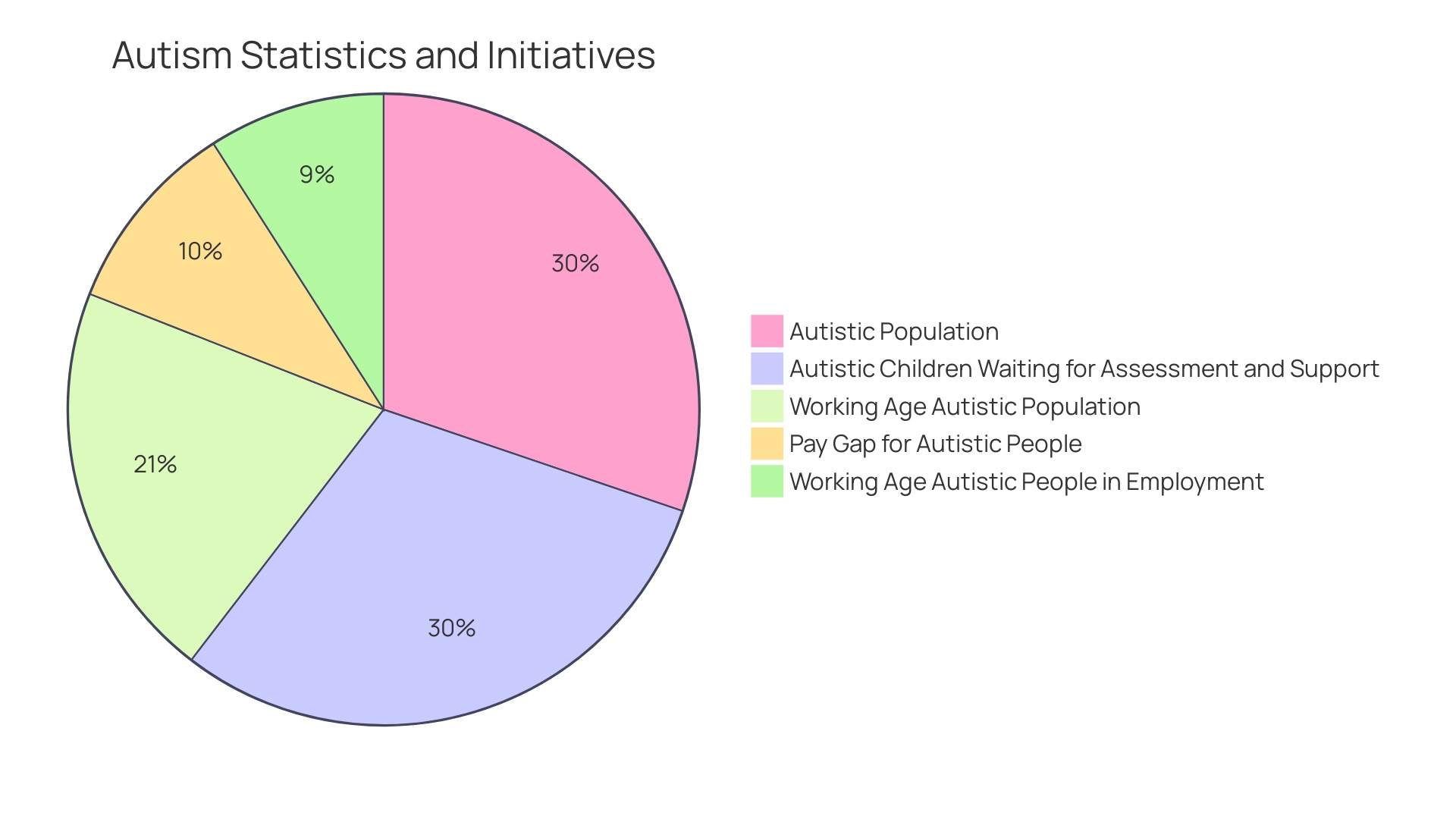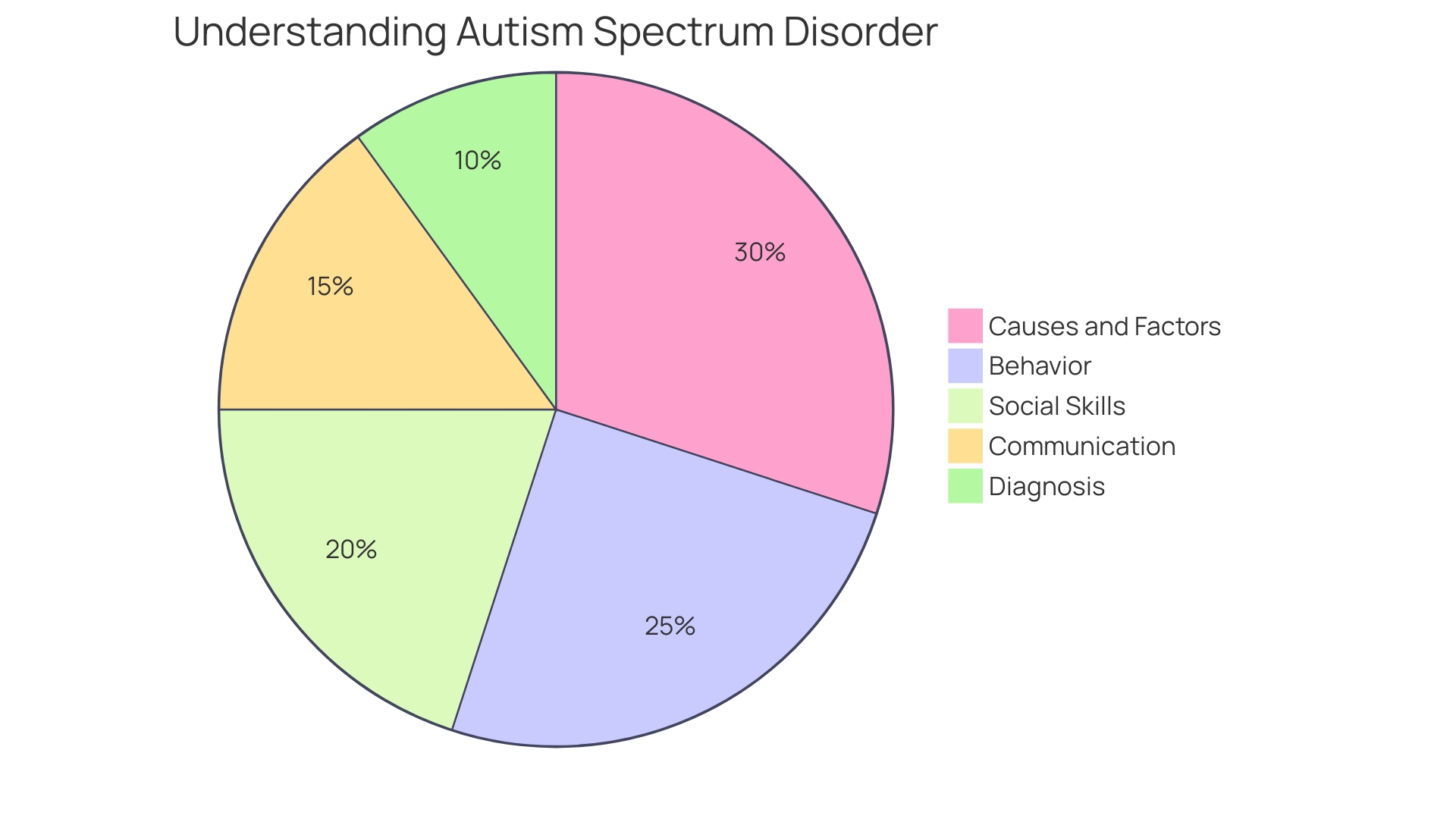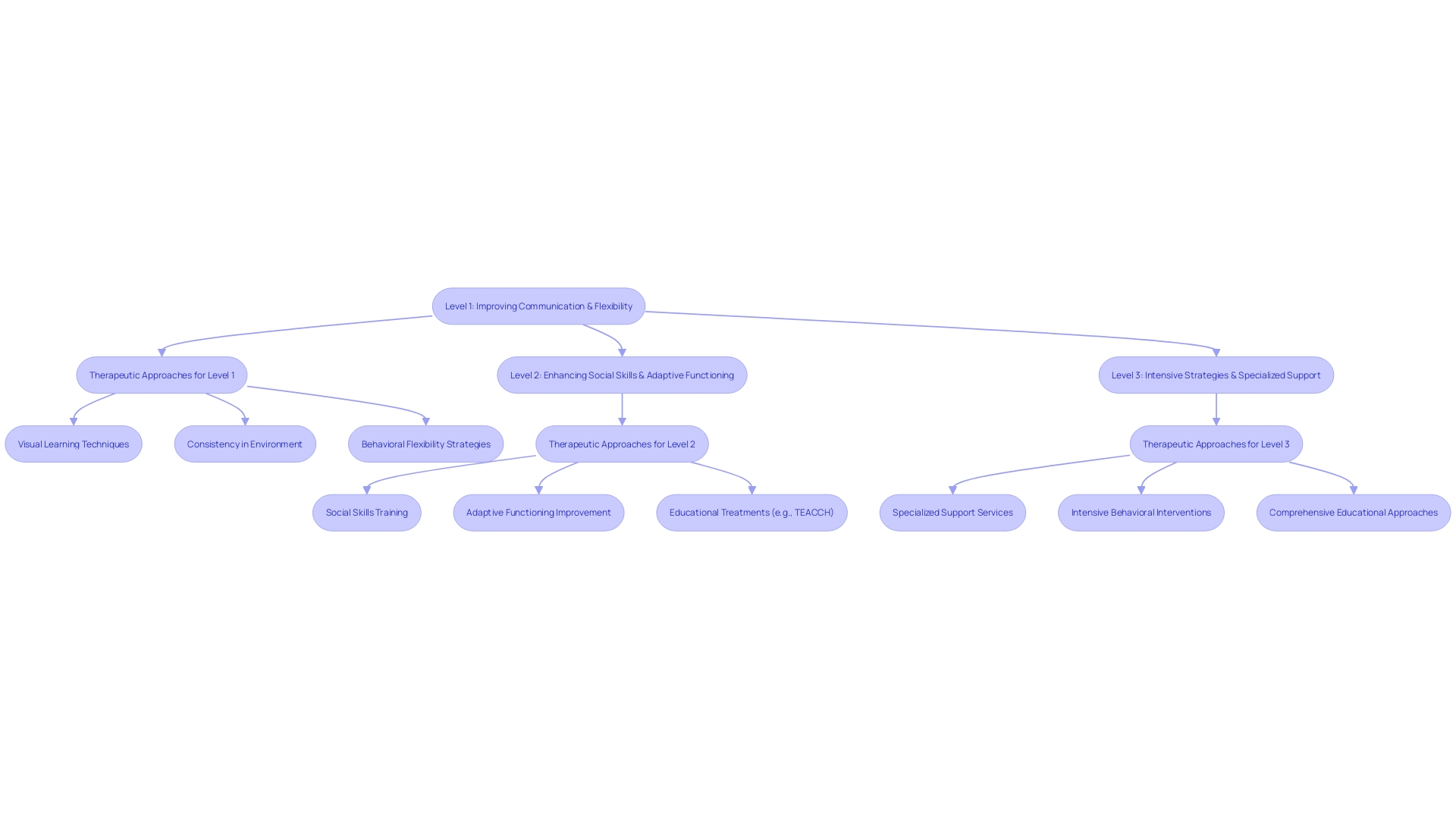Introduction
Autism Spectrum Disorder (ASD) is a complex condition that affects individuals in unique ways, impacting their learning, social interactions, and ability to process the world around them. Within the spectrum, there are different levels of severity, with "high functioning autism" describing those with milder symptoms and greater intellectual abilities. To diagnose ASD, healthcare professionals rely on the DSM-5 criteria, which outline challenges in social communication and interaction, as well as restricted and repetitive behaviors.
However, it's important to remember that no single test should be the sole basis for a diagnosis. Understanding the diagnostic frameworks and legal definitions of ASD is crucial in empowering parents and professionals to provide the necessary support and intervention for individuals with autism.
The DSM-5 Criteria for Autism Spectrum Disorder
Autism Spectrum Disorder (ASD), a condition with a wide range of symptoms and levels of disability, affects people in distinct ways, particularly in their capacity to learn, interact, and process their environment. The term 'high functioning condition' describes those who demonstrate milder symptoms and greater intellectual abilities. While not an official diagnosis, it helps distinguish the various levels within the spectrum. These individuals often possess above-average intellectual capabilities but still encounter challenges in interpersonal situations, experience sensory sensitivities, and exhibit repetitive behaviors.
Diagnosis of ASD often involves a combination of parental observations and professional assessments. The DSM-5, a tool used by healthcare professionals, outlines specific criteria for diagnosing a condition that involves persistent challenges in social communication and interaction alongside restricted and repetitive behaviors. However, it's important to note that no single test should be the sole basis for a diagnosis. Professionals, such as neurodevelopmental pediatricians or child neurologists, may provide further evaluation if needed.
The Americans with Disabilities Act (ADA) defines a disability as a physical or mental impairment that significantly restricts one or more major life activities. This broad definition is intended to provide extensive coverage, emphasizing that disability is not solely a medical condition but also a matter of civil rights. Based on current estimates, about 1 in 54 children in the United States are impacted by the condition. Understanding these diagnostic frameworks and legal definitions can empower parents and professionals to provide the necessary help and intervention for people with autism spectrum disorder.
The Three Levels of Autism Spectrum Disorder
Autism Spectrum Disorder (ASD) presents with diverse symptoms and levels of severity, making it a complex condition to understand. The Diagnostic and Statistical Manual of Mental Disorders, Fifth Edition (DSM-5) categorizes ASD into three distinct levels based on the person's need for assistance in daily activities, with each level reflecting the varying challenges faced by those with autism. For instance, Lil, a 17-year-old student transitioning from a special school to a community-based setting, illustrates the importance of recognizing the individual needs of autistic persons during major life changes. Such transitions can be overwhelming due to new environments and routines, highlighting the need for tailored support and inclusion of the autistic person's voice in the process.
The frequency of diagnoses related to children with developmental disorders is increasing, now estimated at 1 in 36, according to recent reports from the Centers for Disease Control and Prevention. This underscores the urgency for understanding and addressing ASD across the lifespan, including the largely uncharted territory of adulthood. Dr. Gregory Wallace emphasizes the scarcity of research focused on the adult years, where much remains unknown beyond the transition into young adulthood.
Contributions to the field of neurodiversity, such as the 'I am' Digital Story, aim to empower autistic young people by positioning them as knowledgeable about their own experiences. This is a step towards acknowledging the impact of the neurodiversity movement on the scientific understanding of neurological differences, including autism and ADHD.
In an effort to provide a nuanced view of ASD, Dr. Temple Grandin shares her personal experience, challenging misconceptions about empathy in autistic people. Meanwhile, the term 'high functioning autism' is used to describe those who manage to navigate life with milder symptoms, yet still encounter substantial social and sensory challenges. Articles and initiatives like Workplace NeuroDiversity Rising further demonstrate the growing awareness and efforts to create inclusive environments for neurodivergent people.
Understanding ASD requires a comprehensive approach that considers the unique experiences, strengths, and challenges of each individual. It demands ongoing research, community support, and a commitment to inclusion and advocacy, ensuring that every person on the autism spectrum can lead a fulfilling life.
Level 1: Requiring Support
Autism Spectrum Disorder Level 1, often referred to as mild on the spectrum, presents unique challenges and strengths. Individuals with Level 1 ASD may experience subtle difficulties with communication and interaction. They might find it hard to start a conversation or interpret social nuances, requiring a supportive environment to foster effective social skills. Additionally, these individuals might show a preference for routine and struggle with change, which can manifest in a resistance to altering their behavior or trying new activities.
In real-world scenarios, such as the transition from school to work, the need for a structured support system becomes evident. Take the case of Lil, a 17-year-old transitioning from a special school to a community-based setting, which offers a blend of social engagement and skill-building opportunities. For Lil and others with ASD, a predictable and supportive environment is pivotal to navigate new chapters in life. Similarly, Humza, an 11-year-old with ASD, had a customized rehearsal flying experience facilitated by Emirates and Dubai International Airport, highlighting the significance of preparation and familiarization for autistic people.
The experiences of these people highlight the necessity for improved comprehension and adjustment in different environments. Whether it's adapting an open-plan workspace that may overwhelm an autistic person or ensuring inclusive hiring practices that recognize the strengths of neurodiverse individuals, societal adjustments can make a significant difference. With estimates suggesting that 1 in 70 people is autistic in the UK alone, it becomes imperative to bridge the employment gap where only 3 in 10 working-age autistic people are employed. Comprehensive strategies can help raise awareness, reduce stigma, and harness the productivity of autistic employees, leading to a more inclusive society where everyone has the opportunity to thrive.
Level 2: Requiring Substantial Support
Individuals with Level 2 autism spectrum disorder often encounter moderate challenges in areas such as communication and interaction. They may display noticeable difficulties in understanding cues related to interactions with others, which can hinder their ability to engage in back-and-forth conversation and may lead to a reduced sharing of interests with others. Additionally, their behavior may be characterized by repetitive patterns, which can restrict their activities and interests. Considering these challenges, people at this level usually need substantial assistance, including focused interventions that can aid them in adjusting to various social contexts and efficiently handling everyday responsibilities. The notion of providing equitable support aligns with the words of the late Dr. David (Dan) R. Offord, who emphasized the importance of creating a level playing field for all children, including those with disabilities, to ensure their meaningful participation in life's major domains. Consistent with this, it is essential to recognize the distinct strengths and needs of people with autism, minimize stressors that could affect their mental well-being, and equip caregivers with the essential resources to foster the growth and welfare of their families. Highlighting the importance of caregivers is especially crucial in situations where autistic children also face concurrent emotional and behavioral issues, as these children are at a heightened risk of social exclusion. With statistics suggesting that only about 30% of working-age individuals on the autism spectrum are employed, compared to 80% of individuals without disabilities, it's clear that more must be done to facilitate their integration and participation in society. This emphasizes the importance of initiatives aimed at raising awareness of autism spectrum disorder, reducing stigma, and utilizing the unique talents that individuals on the autism spectrum can bring to the workforce.

Level 3: Requiring Very Substantial Support
Level 3, also referred to as 'requiring very substantial support', involves profound challenges in communication and behavior. Individuals with this classification often struggle with verbal and non-verbal communication, which is not just about the words spoken but also the tone, tempo, and inflection – elements known as speech prosody. Research led by the University of Rochester reveals how individuals with a certain neurodevelopmental condition may encounter brain processing difficulties that hinder their ability to understand these subtleties, resulting in significant impairments in social interaction.
The research, published in Scientific Reports, concentrated on adolescents with and without ASD to examine how they interpret the subtleties of speech prosody - a crucial element for differentiating inquiries from statements or expressing emotions like enthusiasm or sarcasm. Adolescence marks a crucial period of expanding social networks and linguistic experiences, making the understanding of prosody particularly salient for social adaptation.
With these insights, interventions like the Treatment and Education of Autistic and Related Communication-Handicapped Children (TEACCH) approach, which emphasizes consistency and visual learning, can be customized to aid people with Level 3 autism. By structuring classroom environments and daily routines visibly and predictably, TEACCH seeks to improve academic and adaptive outcomes, catering to the unique learning styles of those on the spectrum.
Recognizing the range of experiences for autistic people is crucial. As professionals and caregivers work to assist those at Level 3, understanding each person's specific needs and strengths is essential. This approach not only addresses the challenges but also fosters trust and inclusion, allowing autistic individuals to engage meaningfully in their communities, which is a cornerstone of equity and mental health.
The recent shift to more rigorous randomized-controlled trials in research on individuals with developmental disorders underscores the commitment to finding the most effective strategies for assistance. As our comprehension grows, we persist in seeking interventions that empower individuals with neurodevelopmental disorders to live fulfilling, meaningful lives, acknowledging their distinct encounters and the significance of caregiver assistance.
Limitations of the ASD Levels and the Importance of Individualized Care
Autism spectrum disorder is characterized by a diversity of behaviors and impacts people differently, with the CDC noting that it may affect as many as 1 in 36 individuals. Recognizing that each person with a specific set of traits is crucial, as the three levels of autism do not encompass the entire spectrum of abilities and challenges one might possess. Tailored assistance and attention, based on comprehending the distinct characteristics of abilities and requirements, can greatly enhance the life experience of individuals with the condition of autism spectrum disorder. For instance, a tailored approach can help mitigate the high risk of exclusion faced by autistic children and youth with additional emotional and behavior problems, ensuring their engaged and peaceful participation in all life domains.
Federal initiatives like the IACC and the Kevin and Avonte Program are crucial in enhancing research and services for individuals with autism spectrum disorder. These programs demonstrate a collaborative endeavor to connect disparities in care and emphasize the significance of direct community involvement, encompassing autistic adults and family members. By securing resources such as the $10.3 million allocated to prevent wandering incidents, and by emphasizing the necessity for quality medical care for individuals with autism after completing high school, these initiatives underscore the need for individualized approaches that acknowledge the varying degrees of autism and the lifelong support required.
With medical providers spending over half their time on administrative tasks, innovative solutions like Summer Health's text-based pediatric care are paving the way for more efficient communication between doctors and parents. This approach not only eases the burden on caregivers by providing clear and timely medical summaries but also aligns with the overarching goal of making the 'race' fair, as articulated by Dr. David (Dan) R. Offord. By acknowledging the distinctive contributions and attending to the unresolved requirements of each person affected by this condition, caregivers and professionals can foster an atmosphere that promotes the welfare and inclusive involvement of those impacted by autism in society.

Early Diagnosis and Intervention Strategies
The significance of recognizing the early indicators of this condition cannot be overstated, as it opens doors to early intervention, which is pivotal for enhancing communication, social engagement, and adaptive behaviors in individuals affected by this disorder. The sooner the condition is identified, the sooner intervention can begin, and the results can be transformative. It's important for parents and professionals to be watchful for signs of a developmental disorder and to seek a professional assessment if they suspect a child may be at risk. Effective early intervention strategies encompass applied behavior analysis (ABA), speech therapy, occupational therapy, and social skills training.
Innovative research suggests that the onset of a certain developmental disorder is influenced by the dynamic interplay of genetic and environmental factors. Only a small percentage of children diagnosed with a developmental disorder before the age of five are able to live independently as adults, highlighting the significant impact of the disability. Meanwhile, initiatives such as those from NeuroQure strive to transform early diagnosis of developmental disorder, potentially providing diagnoses within weeks after birth, thus reducing the lengthy process families frequently go through.
The Autism Community in Action (TACA) underscores that the sooner behavioral therapy commences, the more favorable the child's prospects. This urgency is echoed by Autism NZ's assertion that early identification and support are paramount for autistic children to flourish and lead lives of their choosing. The high occurrence of the condition, as indicated by WHO and the Centers for Disease Control, further emphasizes the need for timely and effective intervention services.
Children who also confront emotional and behavioral problems are at an especially high risk of social exclusion, making it imperative to address their needs holistically and ensure their caregivers have the necessary resources. Recognizing the distinct abilities these children contribute to their communities, combined with minimizing pressures and offering sufficient assistance, is in line with Dr. David (Dan) R. Offord's goal of equal opportunities for all children.
Therapeutic Approaches for Different Levels of Autism
When addressing the needs of individuals with autism, therapeutic approaches must be tailored to the varying levels of support required by each person. For those at Level 1, the emphasis is typically on improving communication skills, promoting better interactions, and enhancing behavioral flexibility. Moving to Level 2, the emphasis often shifts to specific areas such as social skills training and improving adaptive functioning. At Level 3, the approach is more intensive, with strategies designed to address the individual's challenges in a comprehensive manner, utilizing structured environments, communication systems, and specialized support services.
The selection of these interventions is not straightforward; research indicates that many intervention studies have been conducted with design flaws, casting doubt on their effectiveness, potential harms, and the scope of change they can produce. This highlights the necessity for parents and professionals to critically evaluate intervention research to inform their practices. Notably, the community of individuals with autism spectrum disorder has been active in raising awareness about the quality and reporting of intervention research, emphasizing that the behavior of researchers is a matter of basic respect for individuals on the autism spectrum.
Present-day trends in research related to the condition are leaning towards randomized-controlled trials over quasi-experimental studies, aiming to provide more reliable evidence for the efficacy of interventions. However, this has led to a 'fractured landscape' where there is considerable debate among researchers about the best forms of support for children and their caregivers.
One respected educational method is the Treatment and Education of Autistic and Related Communication-Handicapped Children (TEACCH), which is based on the understanding that individuals with autism spectrum disorder benefit from consistency and visual learning. This approach encourages teachers to adapt classroom structures to enhance academic and other outcomes. For example, visual aids can be used to outline daily routines, define learning station boundaries, and supplement verbal instructions. Social-relational treatments are also employed to bolster social skills and emotional connections.
With an approximate 1 in 36 people impacted by the condition, timely identification and assistance are crucial, allowing for the utilization of services that facilitate a complete and meaningful existence. It is crucial to comprehend that autism is a spectrum condition, impacting people differently and to varying degrees. Therefore, interventions must be as unique as the individuals they are designed to support, ensuring they are respectful of their dignity and tailored to their specific needs.

Conclusion
In conclusion, understanding and diagnosing Autism Spectrum Disorder (ASD) is crucial for providing the necessary support and intervention for individuals with autism. The DSM-5 criteria outline the challenges in social communication and interaction, as well as restricted and repetitive behaviors, but it's important to remember that no single test should be the sole basis for a diagnosis.
Recognizing the three levels of autism, which reflect the varying challenges faced by individuals, highlights the need for tailored support and inclusion of their voices in major life transitions. Early diagnosis and intervention play a vital role in enhancing communication, social engagement, and adaptive behaviors, with effective strategies including applied behavior analysis, speech therapy, occupational therapy, and social skills training.
Therapeutic approaches for individuals with autism should be tailored to their specific needs and supported by critical evaluation of intervention research. It is important to consider the effectiveness, potential harms, and scope of change that interventions can produce. By understanding the unique experiences, strengths, and challenges of individuals with autism, and providing personalized care and support, we can ensure their well-being and equitable participation in society.
Overall, ongoing research, community support, and a commitment to inclusion and advocacy are essential for empowering parents and professionals to navigate the complexities of ASD and provide the necessary resources for individuals with autism to lead fulfilling lives.




